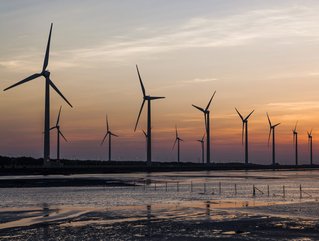Switchgear innovation for offshore generation

Offshore wind is the vanguard of an energy revolution.
With the government’s commitment to build an additional 2GW of offshore wind capacity from 2020 onwards, it could soon generate a fifth of UK power. Cheaper than new gas and nuclear power, onshore is also one of the cheapest forms of power available to us.
While this transition is good for the environment, it will be a challenging one for utilities. The country continues to reduce its reliance on fossil fuels while utilities are under greater pressure to improve the efficiency and reliability of their power supply. Yet the rise of offshore wind poses new and unfamiliar challenges.
More support and funding means offshore wind farms are growing larger and more innovation in the space means that they can be installed further out to sea. Wind turbines are also increasing in size to generate more energy, with 10MW+ machines likely in the future.
The drawback of large farms is that bigger turbines and longer cables are required to connect the generated power to the grid. Without an innovative approach to high-voltage switchgear, utilities run the risk of more expensive equipment and more frequent power losses.
SEE ALSO:
Knowing which way the wind is blowing
Traditional 72.5kV switchgear is costly, heavy and intended for the transmission of power from the generation site to an electrical substation. It can no longer scale with the complex demands of our burgeoning offshore capacity.
Now, utilities have to be smarter when selecting switchgear and should not be afraid of more innovative solutions. For easier transportation, installation and maintenance they should prioritise solutions that are compact and lightweight. Yet they must also be resilient, staying in good condition in harsh open-air and underground environments.
For improved cost efficiency, utilities should seek out switchgear with maintenance-free high voltage parts including sealed-for-life vacuum interrupters. Purchasing equipment that comes as a complete unit will also keep installation costs from spiralling.
Above all, they should take advantage of digital innovation. The latest generation of switchgear contains Internet of Things connected sensors, protection relays and discreet devices offer real-time condition monitoring reducing failure rates and increasing the lifespan of equipment. Embedding the common protocol of IEC61850 enables this to be achieved quicker and more cost-effectively than established solutions.
By embracing switchgear innovation, utilities and operators can meet the demands of our diversifying energy mix. The potential of offshore is enormous, it only needs continued support and creativity to help it reach its second wind.
By David Hall, VP Power Systems UK & Ireland at Schneider Electric






